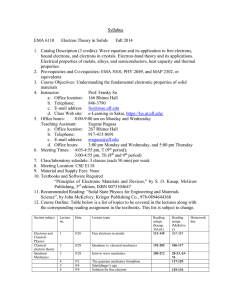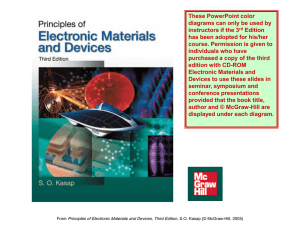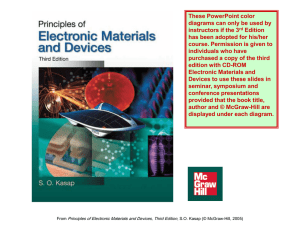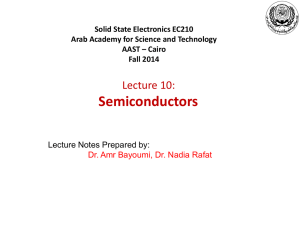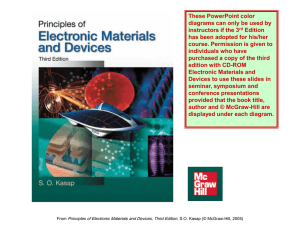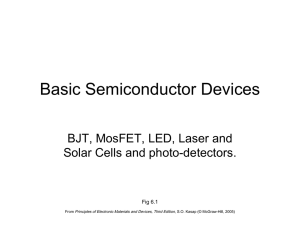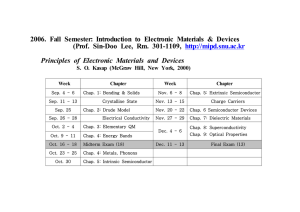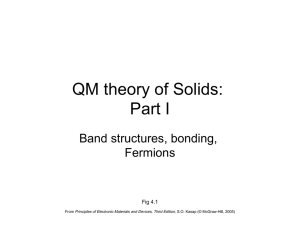Conduction_Part_2
advertisement
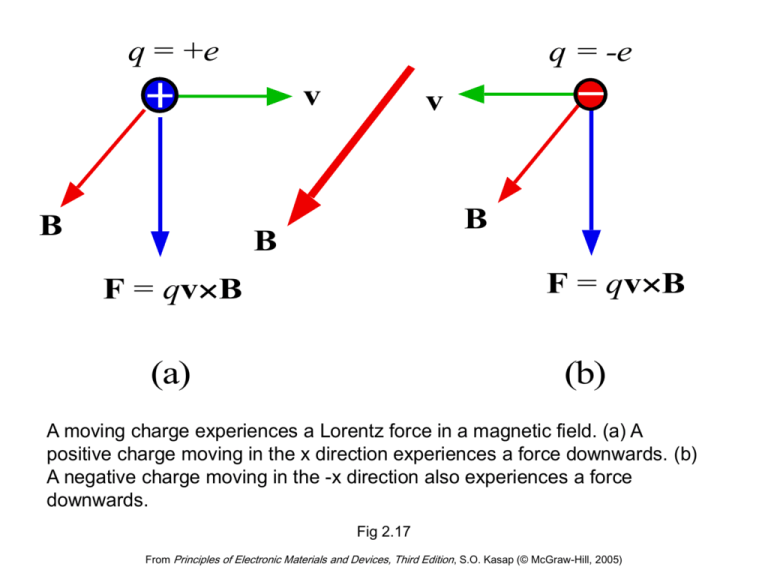
q = +e q = -e v B v B B F = qvB F = qvB (a) (b) A moving charge experiences a Lorentz force in a magnetic field. (a) A positive charge moving in the x direction experiences a force downwards. (b) A negative charge moving in the -x direction also experiences a force downwards. Fig 2.17 From Principles of Electronic Materials and Devices, Third Edition, S.O. Kasap (© McGraw-Hill, 2005) IL Wattmeter IL Load VL Source RL VL IL IL C C V VH Bz w R VL Ix = VL/R Wattmeter based on the Hall effect. Load voltage and load current have L as subscript. C denotes the current coils. for setting up a magnetic field through the Hall effect sample (semiconductor) Fig 2.18 From Principles of Electronic Materials and Devices, Third Edition, S.O. Kasap (© McGraw-Hill, 2005) M7 M6 Low permittivity dielectric M5 M3 Cu interconnects M2 M4 M3 M2 M1 M1 Silicon Metal interconnects wiring devices on a silicon crystal. Three different metallization levels M1, M2, and M3 are used. The dielectric between the interconnects has been etched away to expose the interconnect structure. Cross section of a chip with 7 levels of metallization, M1 to M7. The image is obtained with a scanning electron microscope (SEM). |SOURCE: Courtesy of IBM |SOURCE: Courtesy of Mark Bohr, Intel. From Principles of Electronic Materials and Devices, Third Edition, S.O. Kasap (© McGraw-Hill, 2005) Three levels of interconnects in a flash memory chip. Different levels are connected through vias. |SOURCE: Courtesy of Dr. Don Scansen, Semiconductor Insights, Kanata, Ontario, Canada From Principles of Electronic Materials and Devices, Third Edition, S.O. Kasap (© McGraw-Hill, 2005) Hall effect in a rectangular material with length L, widthW, and thickness D. The voltmeter is across the width W. Fig 2.40 From Principles of Electronic Materials and Devices, Third Edition, S.O. Kasap (© McGraw-Hill, 2005)
